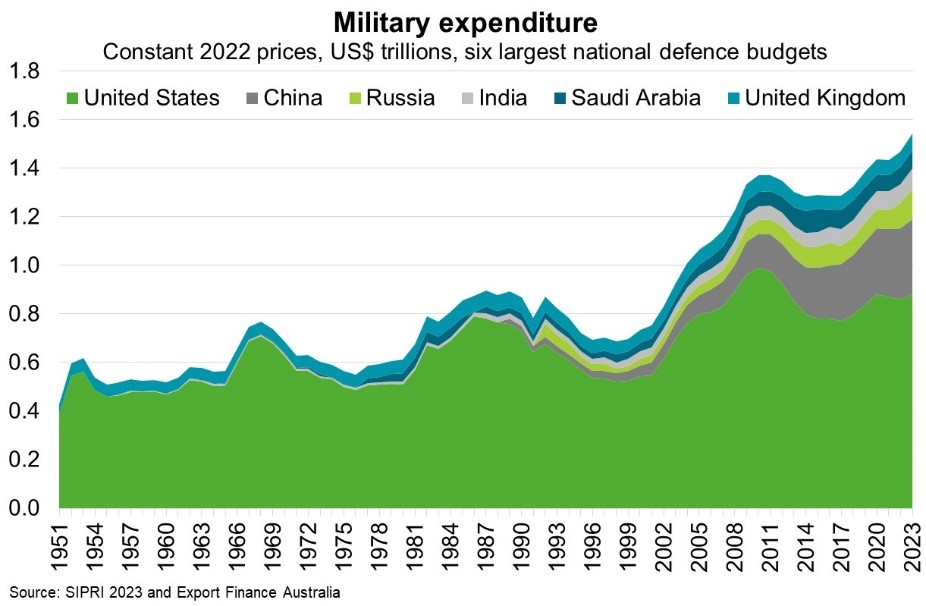Australia — Volatile security landscape drives defence export prospects
An increasingly volatile geopolitical and security landscape is driving up defence spending. Global military expenditure rose for a ninth consecutive year to a record US$2.44 trillion in 2023, according to the Stockholm International Peace Research Institute. Spending rose 6.8% in real terms from 2022, the largest year-on-year increase since 2009.
Expenditure increased in 102 of the 170 countries monitored, with particularly large increases recorded in Europe, Asia and the Middle East. First, war in Ukraine saw most European countries increase their expenditure. This trend will likely continue; according to the 2023 NATO Secretary General’s Annual Report, 18 members met the 2% GDP spending target in early 2024 (of 32 total members, of which 30 are European), up from 11 members in 2023. Second, China—the world’s second largest military spender (Chart)—increased spending by an estimated 6% to US$296 billion in 2023, aiming to boost the combat readiness of the People’s Liberation Army. This prompted neighbours in Asia to improve their military capabilities; for instance, Taiwan and Japan both allocated 11% more to military expenditure in 2023. Meanwhile India—the fourth largest military spender globally—increased its military expenditure by 4% to US$84 billion. Last, war in Gaza and concerns about escalating regional conflict saw estimated military expenditure in the Middle East increase by 9% to US$200 billion.
Governments aim to spend more on defence within their local industry. However, rapidly rising spending is outpacing industrial capacity in many countries, increasing opportunities for Australian businesses to sell to like-minded foreign governments and participate in joint development projects. For instance, Australia recently signed a production contract for 123 Boxer Heavy Weapon Carrier vehicles for use by the German Army. Australia’s domestic funding for defence will also rise, with overall funding of $765 billion over the decade, according to the 2024-25 Budget. Higher domestic expenditure is likely to improve export capacity.

